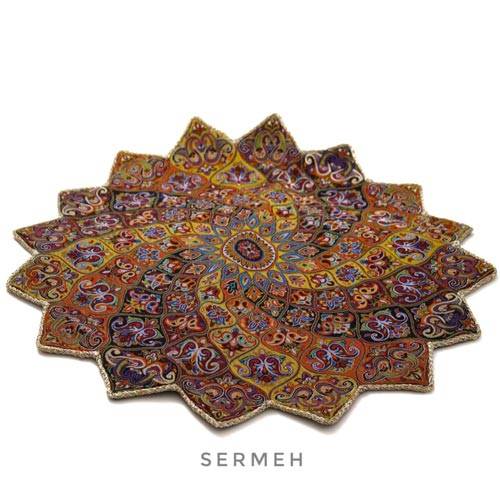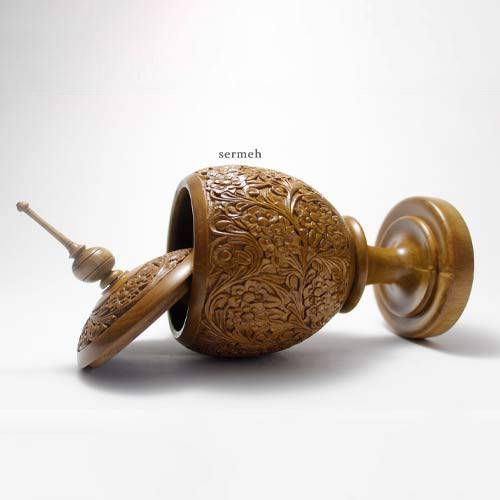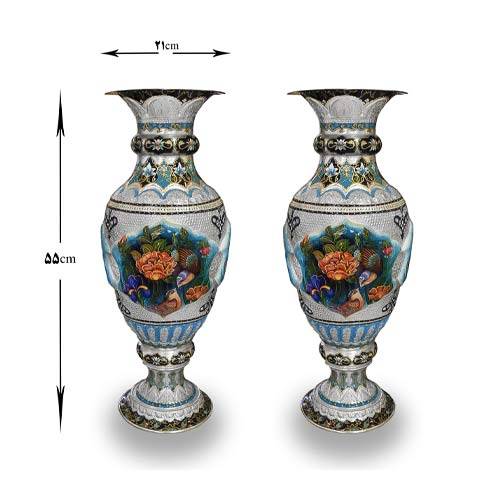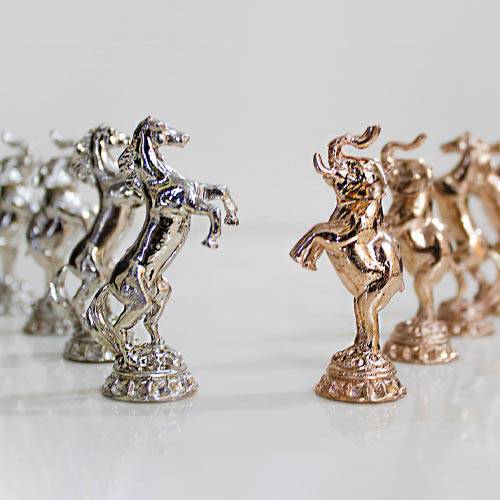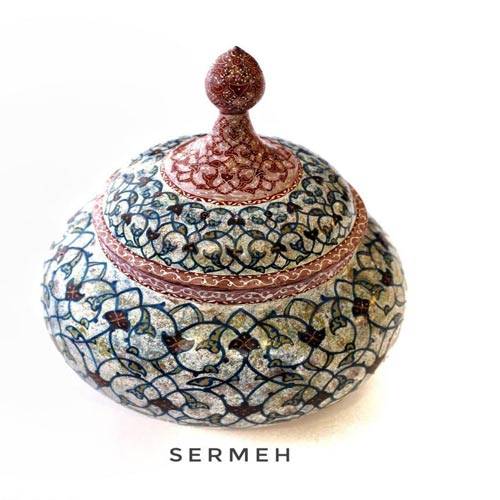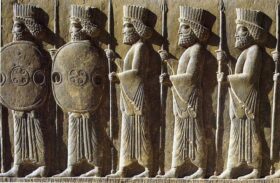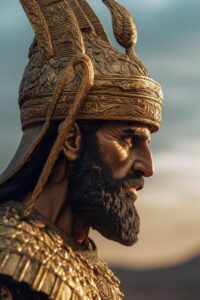Persian history
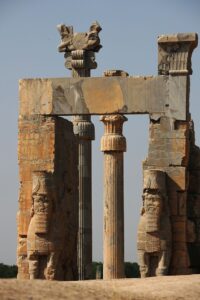
Early Persians inhabited the ancient region of Persia, and it was in that region that Cyrus the Great founded the first Persian dynasty. This Achaemenid Dynasty ruled in the Middle East until Alexander the Great’s conquest of Persia in 331 B.C.
at the battle of Gaugamela. The Persian Empire rose to power again in the century following the death of Alexander the Great.
The Empire maintained power in the Middle East until the Arab conquests of the 7th century A.D
Empire Of Persian History
The Persian Empire was an empire that stretched from India to Europe from 550 B.C.E. to 331 B.C.E. It was ruled by a series of monarchs. An empire is defined as a geographically extensive set of states or peoples that are ruled either by a monarch or by an oligarchy, a small group of ruling elites. Although they gained power by conquering local people, the Persian Empire marked a period of peaceful rule and extensive trading for much of the Middle East.
The Persian Empire began with the migration of Iranians,
a group of Indo-Europeans out of central Europe and southern Russia around 1,000 B.C.E. Persia is now part of the modern country of Iran, hence the name ‘Iranians’ for the larger migratory group that lived in this area. The Iranians who migrated to Persia were horse breeders and traveled with large herds of livestock. Their movement into the region was gradual and took part over several generations. Throughout their migration, the Iranians came into frequent contact with nomadic tribes who also lived in the territory.
The Iranians slowly settled into specific regions and began establishing their societies. Eventually, the two groups established themselves as leaders in the region. In the South, the Persians governed the area between the Caspian Sea and the Persian Gulf and began establishing their society.
In the North, the Medes formed a state called Media and united themselves under one king in 710 B.C.E.
Once the Medes had established the rule of a central government authority in the form of a monarchy, they began to expand into Persian territory while at the same time allying with the neighboring Babylonian Empire to overthrow the Assyrian Empire in 612 B.C.E.
Cyrus the Great
In 550 B.C.E., Cyrus the Great, king of the Persians, successfully conquered the Medes and united the Iranian people together for the first time. Cyrus the Great was one of the best kings in Persian History. Cyrus continued to expand the Persian territory to the west and to gain control of vital trade routes that crossed modern Iran. Persia was a land of towering mountains and flaming-hot deserts with a broad central plateau between
the Tigris-Euphrates River Valley and the Indus River Valley.
The high mountain peaks cut off the Persians from the sea and limited their ability to trade with neighboring states.
Gaining access to seaports was of crucial importance to Cyrus and the development of the Persian Empire.
Cyrus’ armies swept along the coast of Anatolia, securing both ports for trading and subduing nomadic tribes who lived in the area. When Cyrus moved his troops into the Babylonian Empire, the people of Babylon welcomed him as a liberator. Cyrus was an astute and benevolent conqueror.
He allowed the people he conquered to continue to live according to their customs and restored sacred objects to religious minorities like the Jews, who had been treated cruelly under the Babylonians. Cyrus also spared the life of Croesus, the king of one of the states he conquered, and asked him to serve as a close friend and adviser.
Cyrus’ son Cambyses continued his father’s method of benevolent conquest and expanded the Persian Empire into Egypt. Darius, Cambyses’ successor, conquered Western India and created the Persian satrapy, or governorship, of the valley of the Indus River. Darius was succeeded by his son Xerxes, who unsuccessfully invaded Greece in 480 B.C.E. Xerxes’ invasion of Greece was the subject of a popular graphic novel and film called 300.


